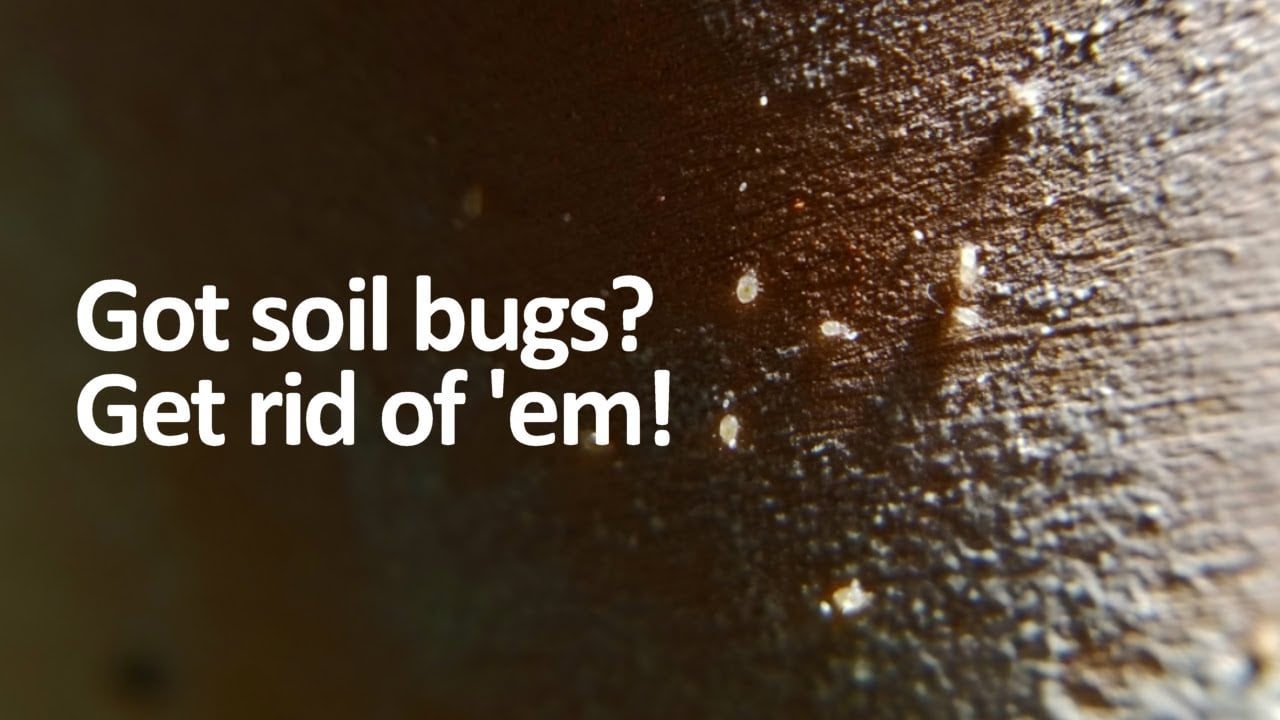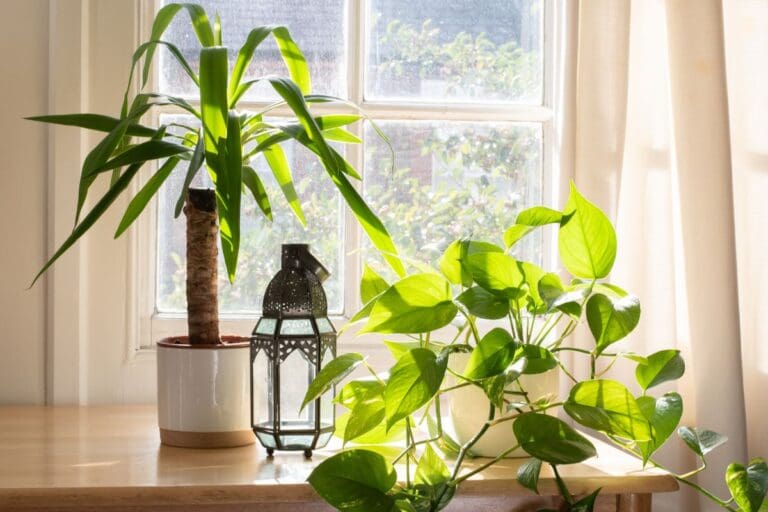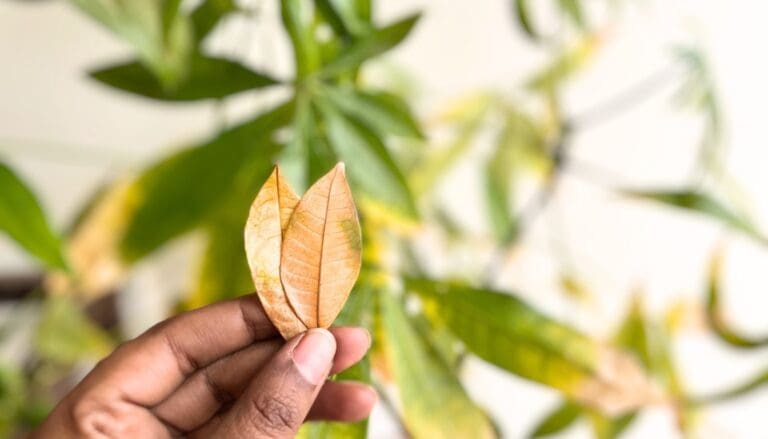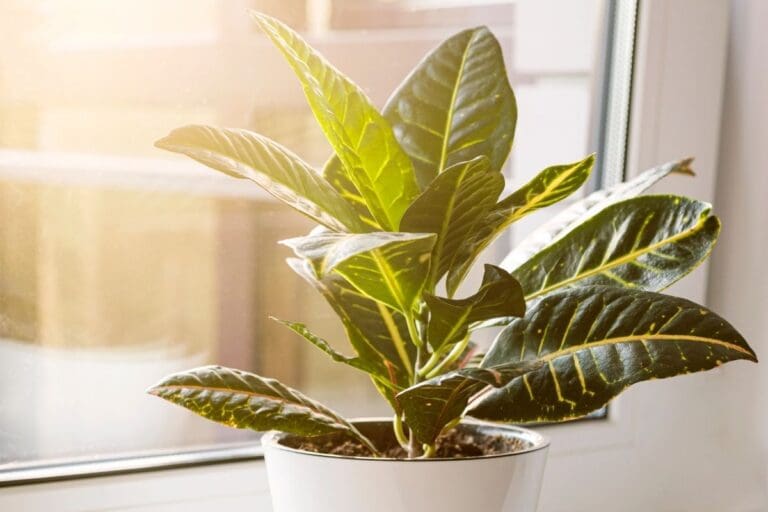White Bugs in Houseplant Soil: Soil Mites – What You Need to Know
Have you ever noticed tiny white bugs crawling around the soil of your houseplants? They might be soil mites, and while their presence can be unsettling, don’t worry too much.
These tiny critters can be managed with the right techniques, keeping your plants happy and healthy. 🌱
Soil mites are often mistaken for more harmful pests, but they play a different role. They help break down organic matter in the soil. Think of them as tiny composters in your plant pots.
It’s important to know when they’ve become a problem and how to keep their number in check.
Have you struggled with soil mites before? How did you handle it? 🤔 I’d love to hear your experiences and tips in the comments! Let’s help each other out and keep our plants thriving. 🌿💬
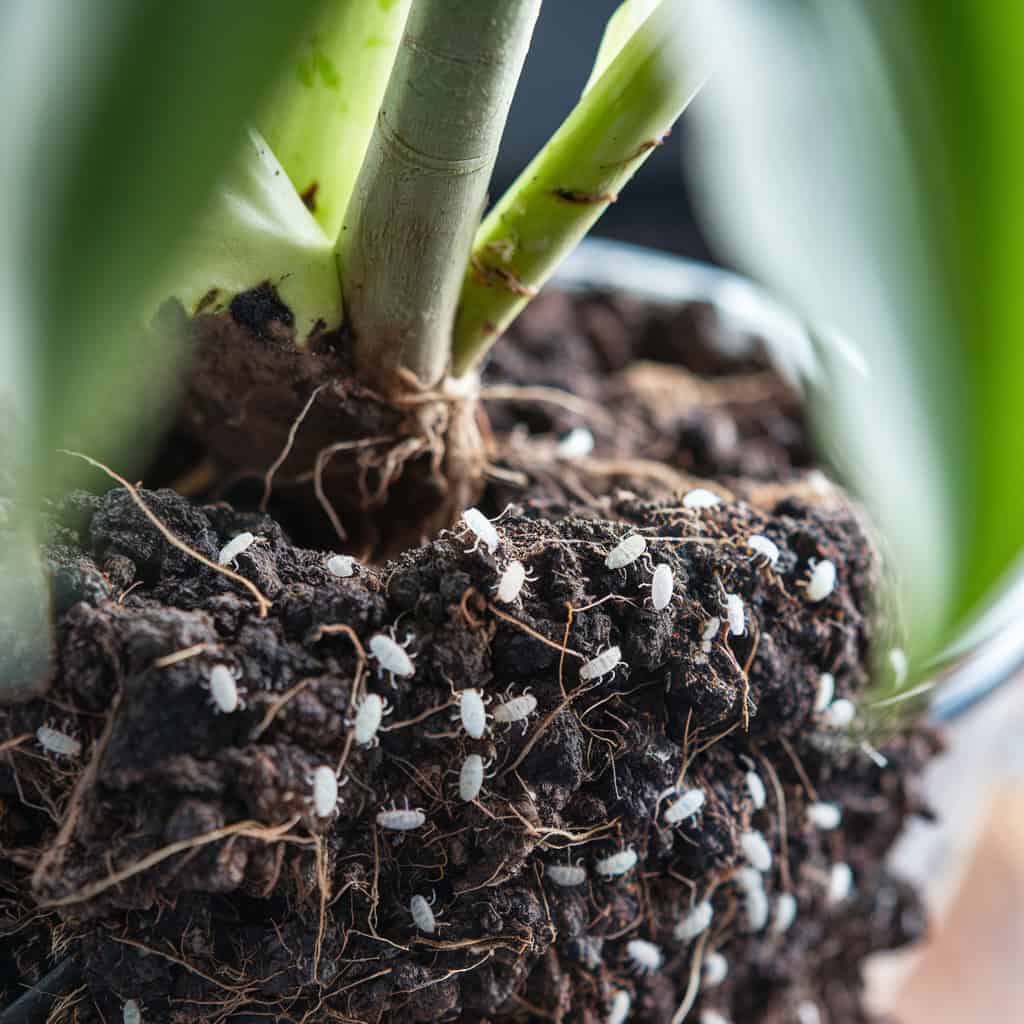
Please note: Simplify Plants is reader-supported. As an Amazon Associate, I earn from qualifying purchases made by our readers with no extra cost added to you all! Some links in the post are affiliate links and I get a commission from purchases made through links in the post.
Identifying Soil Mites
Let’s dive into spotting soil mites and understanding their favorite hangouts! This can help keep your houseplants happy and healthy. 🌿✨
Visual Characteristics
Soil mites are tiny, often barely visible to the naked eye. They usually appear as small white or brown flecks moving on the soil surface.
Unlike spider mites, which are red, soil mites are either white or transparent. If you spot tiny critters that look like specks of dust moving around, you’ve probably found soil mites.
Sometimes, soil mites gather in clusters. Have you ever noticed a bunch of these tiny spots in one area of your plant’s soil? It might feel like a mini army is trying to take over. Don’t worry, they’re not dangerous to your plants or you, but knowing they’re there can help you take action.
Common Habitats
Soil mites love damp environments. If your plant’s soil is consistently moist, it’s a perfect home for them.
They thrive in the top layers of the soil where they feed on decaying organic matter, fungi, and other tiny organisms. Soil mites can be found in almost any houseplant but are less common in very dry soils like those preferred by cacti and succulents.
Do you have houseplants that need frequent watering? These are more likely to attract soil mites.
Next time you’re watering, take a close look at the soil surface. Spot any tiny movers? That’s a clue you might have soil mites making themselves at home.
Soil Mite Life Cycle
Let’s chat about the life cycle of soil mites, those tiny critters living in our houseplant soil. 🪴
First off, female soil mites lay eggs. These eggs are super small, so we rarely see them. They hatch into larvae, which are also tiny but start to look a bit like the adult mites.
Next, the larvae develop into nymphs. The nymphs can shed their skin a couple of times as they grow.
It’s like a mini-metamorphosis happening right under our noses! 😲
Finally, the nymphs become adult mites. This whole process can take from a few weeks to a few months, depending on the conditions like temperature and humidity.
Here’s a simple table to keep track:
| Stage | Description |
|---|---|
| Egg | Tiny, hard to see. |
| Larvae | Small, starts to look like the adult. |
| Nymph | Sheds skin, grows larger. |
| Adult | Fully grown soil mite. |
So, what do you think? Are you seeing any signs of these stages in your plants? Let me know in the comments! 🌱
Would you find it cool or creepy to see these little guys up close? 🤔 Share your thoughts!
Effects of Soil Mites on Houseplants
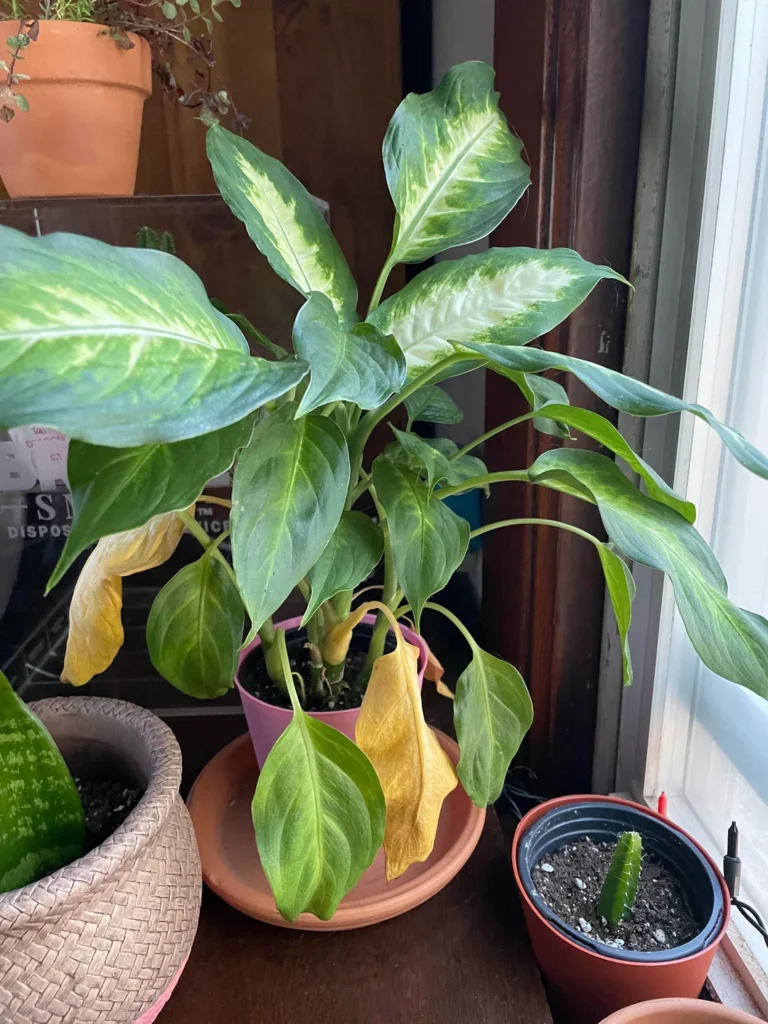
Soil mites can have a few different impacts on our beloved houseplants. First off, while they’re pretty common, in larger numbers, they can cause some issues.
If there’s an over-infestation, you might notice your plant’s leaves turning yellow. This could be a sign of stress and not a good look for our green friends.
Sometimes, soil mites feast on organic material in the soil. While this is helpful in small amounts, too many mites can hinder the plant’s access to nutrients.
Have you ever seen tiny white bugs on your plant’s soil? Not a great sight, is it? It can be a bit unnerving and could even signal a problem.
Also, plants that need moist soil are more likely to have soil mites. Cacti and other succulents, on the other hand, are less likely to be affected. Lucky them, right? 🌵
Have you ever dealt with soil mites in your houseplants? Share your experiences below! Got any tips or tricks? Let’s help each other out! 💬✨
Natural Predators of Soil Mites
Did you know that soil mites have natural enemies? Here are some critters that keep these tiny white bugs in check.
Predatory Mites: These mites are the superheroes of the garden! 🦸♂️ They feed on soil mites and other pests, keeping the soil healthy for our plants.
Nematodes: These microscopic worms might sound scary, but they’re actually garden protectors. They hunt down and eat harmful soil mites. Just add a few to your soil, and they’ll get to work right away!
Ladybugs: We usually see ladybugs on our plants, munching on aphids. They also wander to the soil now and then to snack on soil mites.
Ever seen a centipede in your garden? 🌿 They love to eat pesky soil mites along with other soil pests.
If you’ve got a small garden frog around, consider yourself lucky! They enjoy feasting on soil mites, especially in damper soil conditions. 🐸
These natural predators help maintain a balance without the need for chemicals. Have you spotted any of these helpers in your garden? Share your story in the comments! 🌼
Preventative Measures
Keeping your houseplants free of soil mites is key to their health and growth. Following these steps will help you prevent an infestation and keep your plants in top shape.
Proper Soil Maintenance
First off, using sterilized soil is important. This stops mites from getting into your plant’s home from the start. When you buy soil, make sure it’s from a trusted source.
Avoid overwatering your plants. Mites love damp environments, so let the soil dry out between waterings. 🌿
Adding a bit of cinnamon on top of the soil can keep bugs away too! It acts like a natural barrier.
Don’t forget to clean pots and tools regularly. Use a mild soap and warm water to scrub away any lurking pests.
Regular Monitoring
I always check my plants whenever I water them. Look at the soil closely and see if there are any tiny white bugs moving around.
Using a magnifying glass can help spot these pesky mites. If you see them, take action quickly before they spread.
Any new plants? Quarantine them! Keep them separate for about two weeks to make sure they aren’t bringing any unwanted guests.
If you find any mites, rinse your plants and change out the soil. This helps stop the bugs from multiplying.
👉 Have you ever dealt with soil mites? Share your tips in the comments below! Let’s help each other keep our plants happy and healthy. 😄
Control and Removal Techniques
Getting rid of soil mites in your houseplants can be tricky, but with the right techniques, you can protect your plants and keep your home bug-free.
Different methods work for different people, so it’s worth exploring both organic and chemical solutions. 🌿
Organic Methods

If you’re like me, you probably prefer natural ways to tackle those pesky bugs.
First, try neem oil. It’s a natural insecticide that works wonders. Mix a few drops with water in a spray bottle and lightly mist the soil and leaves.
Another trick is using diatomaceous earth. Sprinkle a thin layer on the soil. This powder is harmless to humans but deadly for bugs by drying them out.
You can also try cinnamon. Yep, the stuff you put in cookies! Mix it into the soil to repel mites. Plus, it smells great.
Last but not least, consider using predatory mites. These helpful bugs will hunt down soil mites without harming your plants.
Chemical Solutions
Sometimes, organic methods just don’t cut it. That’s when I turn to chemical solutions.
One effective product is insecticidal soap. This can be applied directly to the soil and works by suffocating the bugs.
Systemic insecticides are another option. These are added to the soil and absorbed by the plant, killing any bugs that munch on it. It’s a bit strong, so use it sparingly.
Hydrogen peroxide is another chemical method. Mix one part hydrogen peroxide with four parts water and drench the soil. This kills the bugs without harming your plant.
Just remember, always follow the instructions on the products to avoid damaging your green friends.
Understanding the Ecosystem of Houseplant Soil
Let’s dive into the tiny world of houseplant soil! 🌱
Houseplant soil isn’t just dirt—it’s a living ecosystem.
It’s full of life and activities happening just under the surface.
Soil mites, the stars of our show, play a big role here. They might be small, but they sure are busy!
Why should we care about soil mites?
Well, they help break down organic matter, turning it into nutrients that plants can absorb.
Think of them as the little chefs cooking up a nutritious meal for your plants.
Different types of mites and bugs live in the soil.
Besides soil mites, you might find springtails, fungus gnats, and root aphids.
Each has its own job and place in the soil ecosystem. 🐛
Here’s a quick comparison:
| Bugs | Role in Soil |
|---|---|
| Soil Mites | Decompose organic matter |
| Springtails | Aid in decay processes |
| Fungus Gnats | Larvae can harm roots |
| Root Aphids | Feed on plant roots |
Keeping the soil healthy means balancing these tiny critters.
Too many harmful bugs and your plant might suffer. But a healthy mix keeps the soil and your plants thriving.
Got any tips on keeping your plant soil healthy?
Share your thoughts in the comments below! 😊
FAQS
Q: What are soil mites?
Soil mites are tiny white bugs that live in houseplant soil. They help break down organic matter. They don’t hurt your plants, but too many can make your soil look messy.
Q: Are soil mites harmful to my houseplants?
Most of the time, soil mites are harmless. They actually help by breaking down dead material. However, if you see too many, they can be a nuisance.
Q: How can I tell if I have soil mites?
Look for small, white bugs moving in your plant’s soil.
They are very tiny, so you might need a magnifying glass. Do you see any of them?
Q: How do I get rid of soil mites?
To get rid of soil mites:
- Water the plant well and then remove it from its pot.
- Rinse the roots to wash away mites.
- Use natural repellents like garlic water.
- Just soak garlic cloves in water and pour it through the soil.
- Consider using neem oil. This natural oil can help reduce mite populations.
Q: Can I prevent soil mites?
Yes!
Keep your plant’s soil clean and dry. Don’t over-water your plants. Good air circulation helps too.
Think of it like keeping your plants’ living space tidy.
Q: Should I worry about soil mites if my plant looks healthy?
No need to worry if your plant is healthy.
Soil mites usually don’t cause damage. They just help decompose organic material.
Conclusion
Having these soil mites in your houseplant soil can be annoying, but don’t worry, it’s totally manageable! 🪲
First, remember to keep an eye on your plants regularly. Noticing problems early can make a huge difference.
Next, try some natural remedies like neem oil or introducing beneficial bugs like ladybugs that like to munch on mites. 🐞
Have you tried any of these methods?
Also, keep your plant’s environment clean. Avoid overwatering and ensure good drainage to prevent these pests from thriving.
I love hearing about your success stories! How did you deal with soil mites in your houseplants? Drop a comment below and share your tips! 🌿✨
Have you found this helpful? Don’t forget to share your experience and let’s help each other keep our plants healthy and happy! 🌱❤️
Recommended Garden Supplies
| Product Image | Our Recommended Gardening Supplies | Check Offers! |
|---|---|---|
Top Top
Top
Top
Top
Top
Top
Top
Top | rePotme Houseplant and Tropical Classic Potting Soil Mix | Check Offer On Amazon |
 Top
Top
Top
Top
Top
Top
Top
Top | Espoma Organic Indoor Plant Food | Check Offer On Amazon |
 Top
Top
Top
Top
Top
Top
Top
Top | GooingTop LED Grow Light 6000K Full Spectrum Clip Plant Growing Lamp | Check Offer On Amazon |
 Top
Top
Top
Top
Top
Top
Top
Top | Soil Moisture Meter | Check Offer On Amazon |
 Top
Top
Top
Top
Top
Top
Top
Top | Govee Hygrometer Thermometer, Bluetooth Enabled! | Check Offer On Amazon |
 Top
Top | LEVOIT Humidifiers for Large Room(Best For Plants) | Check Offer On Amazon |
 Top
Top
Top
Top
Top
Top
Top
Top | Upgraded DIY Automatic Drip Irrigation Kit, 15 Potted Houseplants Support | Check Offer On Amazon |
 Top
Top
Top
Top
Top
Top
Top
Top | Stainless Steel Heavy Duty Gardening Tool Set | Check Offer On Amazon |
 Top
Top
Top
Top
Top
Top
Top
Top | Bonide Insecticidal Soap | Check Offer On Amazon |
 Top
Top
Top
Top
Top
Top
Top
Top | Bonide 32 oz Spray Neem Oil for Organic Gardening | Check Offer On Amazon |
 Top
Top
Top
Top
Top
Top
Top
Top | Garden Safe Fungicide | Check Offer On Amazon |

